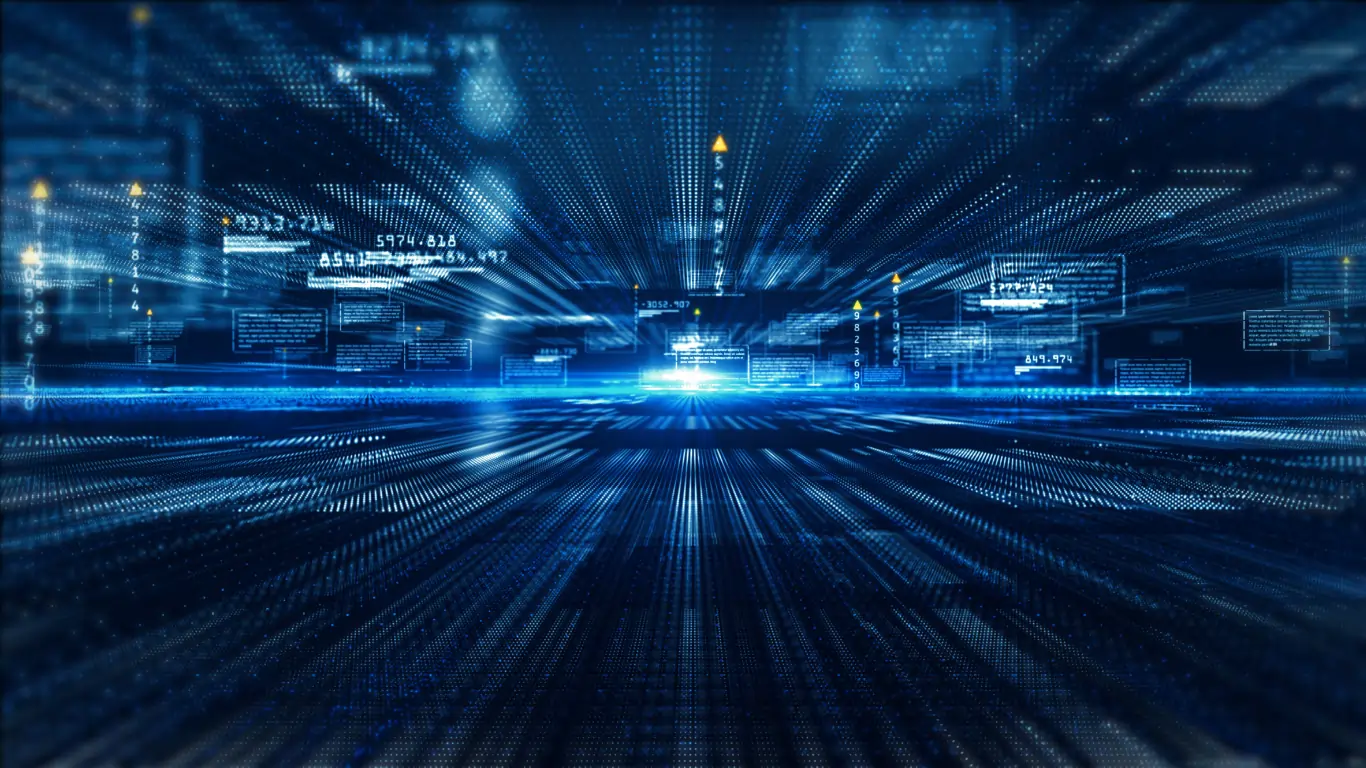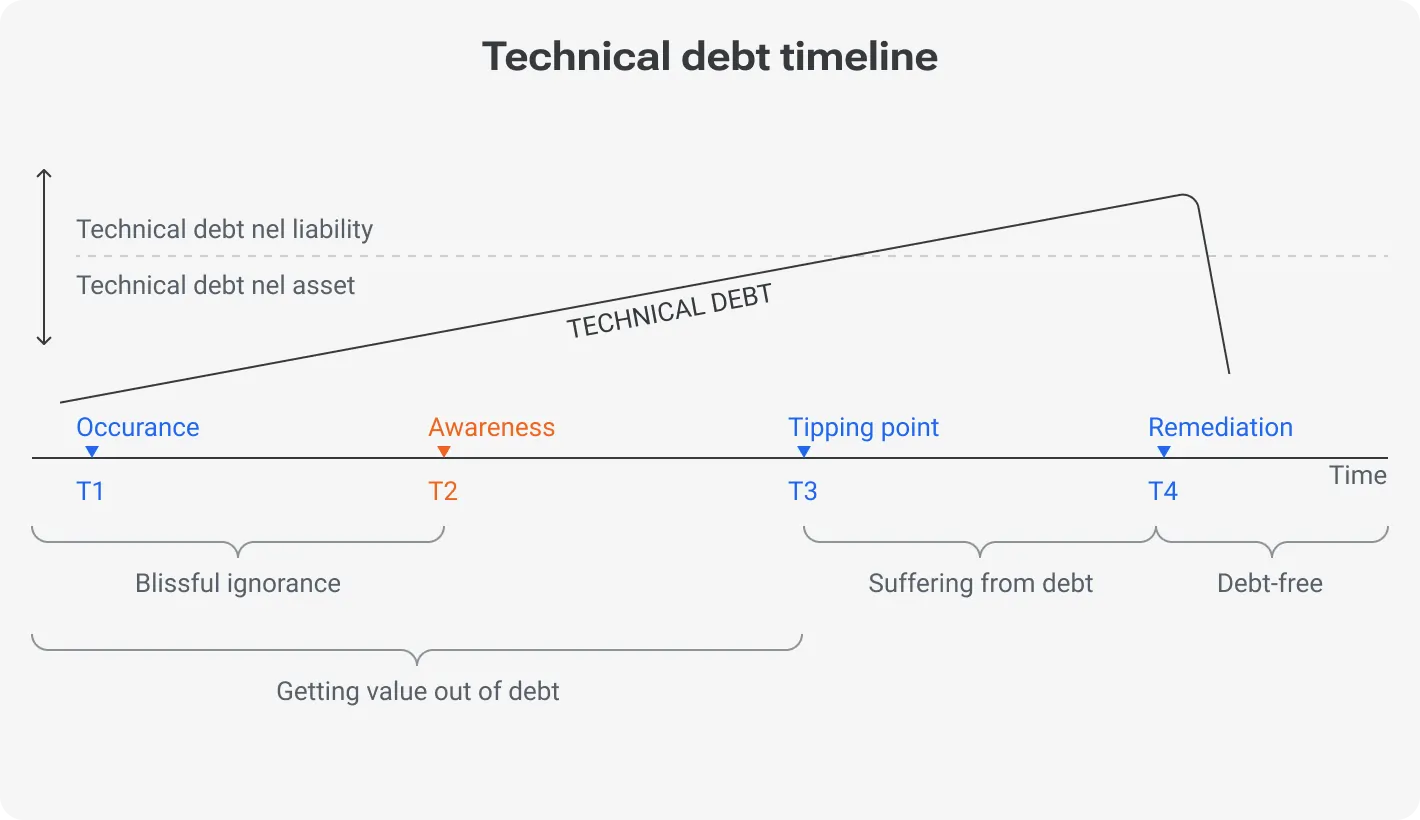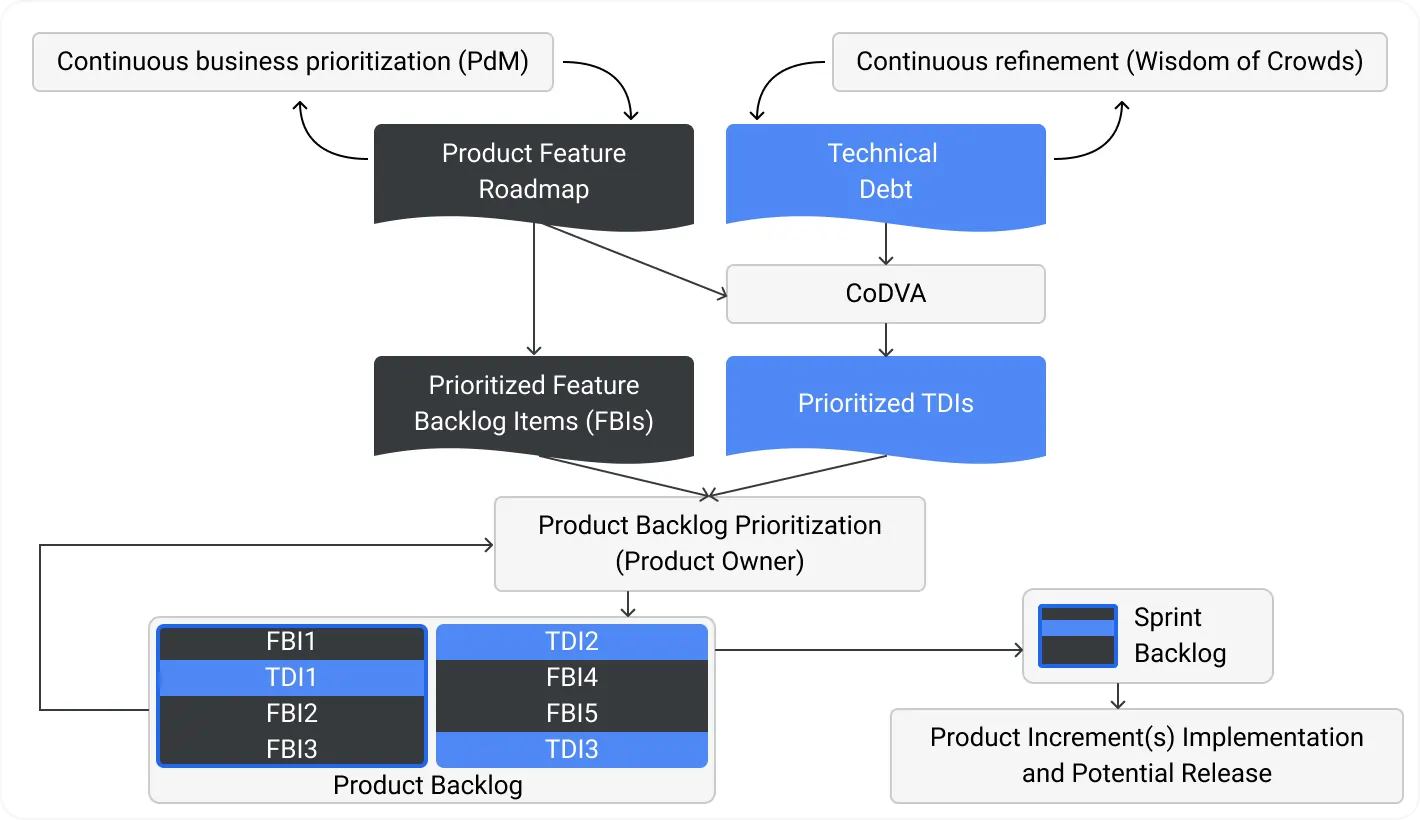If you think you don’t have technology debt (TD), better think again. In 2023, DXC conducted research and found out — almost mind-blowing 99% of C-suite executives in tech companies think of tech debt as a high risk to their businesses. On the contrary, code debt reduction leads to at least 39% cost savings. Not bad.
As projects evolve, technical debt management becomes a critical factor in ensuring the longevity and success of software endeavors. For this reason, many specialists craft technical debt roadmaps. But the most interesting thing is that this leads only to ignoring the initial problem.
While technical debt roadmaps have become a common practice, concerns are growing regarding their effectiveness. Every CTO, CEO, or even developer should understand all major risks associated with relying solely on technical debt roadmaps to manage the intricacies of software development.
Three Risks Associated with Technical Debt Roadmaps
McKinsey stated that an average TD is about 20-40%. Widely adopted roadmaps pose significant risks that can undermine the very purpose they are intended to serve. Simply put, roadmaps not only don’t help solve the problem but also force you to ignore it.
1/ Ignorance leads to negligence
The biggest risk is an unforeseen risk; one you are in the dark about. Or one you just don’t understand. Or ignored one. And here, we don’t mean ignorance in the classic sense. We rather mean a lack of awareness or underestimation of the depth and implications of existing technical debt.
That is all perfectly proven by Equifax's data breach that took place in 2017. One of the largest credit reporting agencies, Equifax, encountered a massive cyberattack that exposed the personal information of about 147M people. Equifax had a web application, and one of its components was the Apache Struts framework. Many experts share the thought that this is a vulnerability in that component that caused the hack. The most interesting is that a patch for the known vulnerability had been available for several months prior to the attack, but Equifax had failed to apply it.
The moral: never act like Homer Simpson, who once said, “Ignore a problem, and it will go away.” Equifax neglected to prioritize and address known issues, resulting in a breach that had far-reaching implications for both the company and the affected individuals.
This inevitably results in teams overlooking critical issues. Different studies found that 80% of software teams carry some level of technical debt. So you should understand that a) you are not alone and b) you can handle this issue with a qualified expert.
To prevent the trap of ignorance, development teams can adopt several proactive measures.
Regular Security Audits: Regularly conduct security audits to identify and handle vulnerabilities promptly. Metaphorically speaking, in this way, you are laying down a straw where you could potentially fall.
Continuous Training: We are not big fans of buzzwords, but lifelong learning is the only way. And you should implement continuous learning practices within the development team. Stay informed about the cutting-edge moves in software security and ensure that team members are equipped to recognize and address potential threats.
Automated Vulnerability Scans: We are apologists of automation. This eliminates human errors and frees time. So, if it’s possible to use automated tools for vulnerability scanning in your development pipeline, use them. These tools can identify known vulnerabilities in dependencies, providing early visibility into potential areas of concern.
Clear Communication Channels: Establish clear communication channels within the team to facilitate the reporting of potential issues. Encourage open dialogue about the state of the codebase and any concerns related to technical debt.
Empower your IT team to focus on innovation and growth by outsourcing your technical debt management
2/ Delaying action amplifies the perils of technical debt
When it comes to the real cost of TD, there are several directions to look over. Cost of delaying and cost of innovations that never come. For example, 46% of top tech executives admit that code debt doesn’t allow them to transform and grow. Postponing the resolution of such issues can lead to a compounding effect, where seemingly minor problems escalate into significant hurdles. For instance, the Southwest Airlines case — the company put away tackling technology debt for better times which resulted in a USD 800M loss.
Another example comes from the software giant Microsoft, which, in the early 2000s, faced severe security vulnerabilities in its Windows operating system due to delayed resolution of technical debt. The cost of addressing these issues post-factum was significantly higher compared to addressing them promptly during development.
3/ Concealing technical debt complicates discussions with stakeholders
Transparency is a cornerstone of effective project management. When technical debt is hidden or downplayed in discussions with stakeholders, it introduces a layer of complexity and hampers communication. Stakeholders, especially external ones, need a clear understanding of the challenges and potential roadblocks. Concealing TD can erode trust and impede collaborative decision-making. And you may end up with misaligned expectations and project delays.
A case in point is the Volkswagen emissions scandal, where the concealment of TD in the form of illegal software led to severe financial and reputational repercussions.
How to avoid tech debt in software implementation
Incorporating Technical Debt into Your Product Roadmap
Okay, we have already understood that a separate technical debt roadmap doesn’t work. But where should you track it?
Your TD ought to be included in your product roadmap, alongside epics, themes, and any other strategic components of your product’s aims and ambitions since TD is also a strategic thing.
Integrating it into your strategic roadmap reveals the volume of your code debt. Here are some steps to complete when incorporating technical debt into your product roadmap.
Establish a distinct "technical debt" lane
Example. How to prioritize tech debt in telecom apps
It's hard to get anywhere blindfolded. To enhance visibility, set up a dedicated lane or section in the product roadmap specifically for addressing these concerns. This ensures that technical debt-related tasks are not buried among other priorities. May seem too simple, but it is very effective though. This way, teams highlight the value of addressing technical debt as an integral part of the development process.
Categorize technical debt items appropriately
Not all technical debt is created equal. Some types should be a top priority, while others can be postponed (to a certain sprint). Categorize code debt items based on their severity and impact on the project. This move allows teams to make priorities really work. High-priority technical debt, which poses immediate risks, can be addressed promptly, preventing the compounding effect discussed earlier. A systematic approach to categorization empowers development teams to allocate resources judiciously and ensure that critical issues are addressed earlier than in the nick of time.
Allocate consistent time for addressing technical debt on the roadmap
CEOs, CTOs, and C-suite representatives should always choose between a new feature development and technical debt resolution. It requires a consistent and realistic time allocation on the product roadmap. Setting aside dedicated time for addressing code debt ensures that it receives the attention it deserves without being overshadowed by new feature requests.
To sum it up
Embracing a holistic approach is the cornerstone of sustainable success. Remember that code debt is a natural part of software development. However, ignoring it will inevitably disrupt the entire app, leading to cascading failures. We can’t solve this problem with a technical debt roadmap, but we can transform debt from a menacing foe into a manageable part of the landscape. Let’s run through key takeaways.
Ignorance leads to negligence: Acknowledging technical debt is the first step toward addressing it. Ignoring or underestimating its impact can lead to critical oversights.
Delaying action amplifies perils: Postponing the resolution of technical debt issues can result in compounding challenges, escalating the overall cost and complexity of the project.
Concealing complicates discussions: Transparency is essential for stakeholder engagement. Concealing technical debt can hinder effective communication and erode trust.
Balance new feature development with technical debt resolution. Allocate time realistically and consistently for both parts of the project. This way, you ensure ongoing, proactive management.
Gain an access to seasoned professionals specialized in managing technical debt







